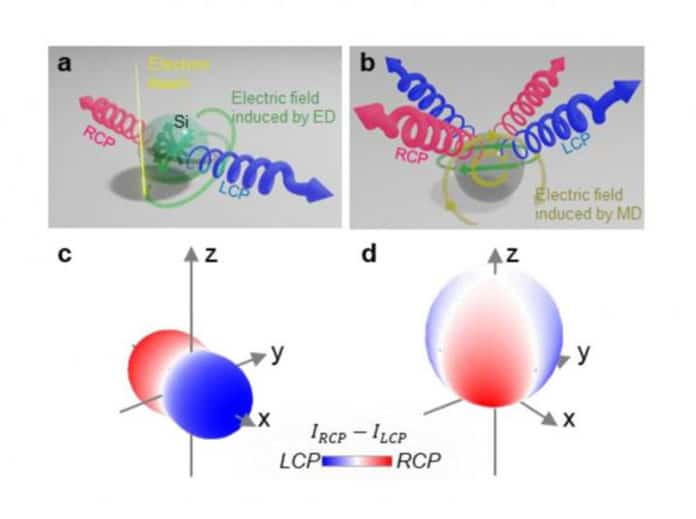Circularly polarized light (CPL) is a crucial element of cutting edge technologies, such as quantum communication and encryption. CPL can have right-handed or left-gave polarization relying upon the direction where the oscillations rotate. This ‘binary’ characteristic of circular polarization can be utilized to encode data in light in a robust way; In other words, it is impossible that a receiver would confuse right-handed CPL with left-handed CPL. In this way, creating emitters capable of delivering CPL is an active field of examination.
Using two-dimensional achiral structures is one emerging method to produce CPL. “Achiral” is like “symmetric,” implying that the perfect representation of an achiral structure is undefined from the original object. Yet, how does a symmetric object emanate light with two unique methods of circular polarization? The appropriate answer is “external symmetry breaking,” whereby controlled localized excitations or specially designed detection schemes cause achiral structures to produce CPL with the desired orientation.
In a new study, scientists at Tokyo Tech, Japan, and ICFO, Spain, have found a way to generate CPL from the ultimate symmetric structure–the sphere. They have developed a method to generate circularly polarized light from the ultimate symmetrical structure: the sphere. Their approach involves breaking the sphere’s inherent symmetry by electron beam excitation, which allows for precisely controlling the phase and polarization of the emitted light.
In this study, scientists irradiated a spherical nanoparticle with electron beams to trigger a phenomenon known as “cathodoluminescence.” This process, which is based on 20th-century television displays, involves high-energy electrons impinging on the material and exciting multiple local electrons to higher energy states, which then emit this excess energy as photons.
Associate Professor Takumi Sannomiya, who led the study, said, “The use of electron beams are a versatile way of exciting precise optical modes and presents potential advantages for the on-demand generation of CPL.”
When using a sphere, an adequately designed excitation scheme is necessary to achieve the desired symmetry breaking. The scientists proposed not one, but two different ways to produce left- and right-handed CPL from a sphere. The first way involves manipulating the phase differences between two electric dipoles induced by an electron beam in the sphere. The other way is leveraging the interference produced between magnetic and electric dipoles.
Using a polarimetry technique called four-dimensional STEM-CL, short for “scanning transmission electron microscopy-cathodoluminescence, scientists experimentally visualize the CPL generated by their spherical nanoparticles. The outcomes almost perfectly in line with the predictions of rigorous theoretical analyses.
Sannomiya concludes, “Our approach holds great potential for the development of customizable CPL sources, whereby the phase and degree of polarization of the emitted light can be readily controlled through the positioning of the electron beam.”
Journal Reference:
- Taeko Matsukata et al. Chiral Light Emission from a Sphere Revealed by Nanoscale Relative Phase Mapping. DOI: 10.1021/acsnano.0c05624
